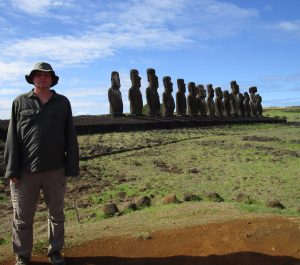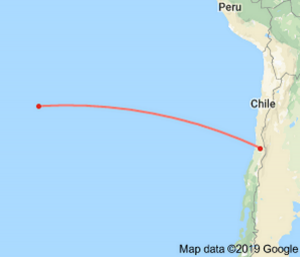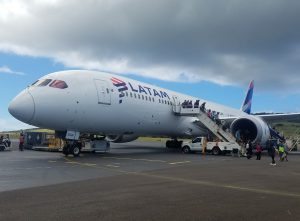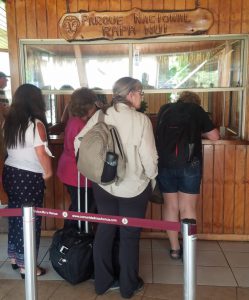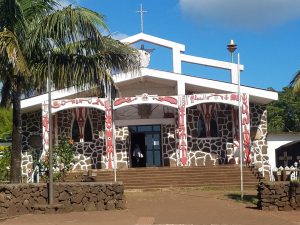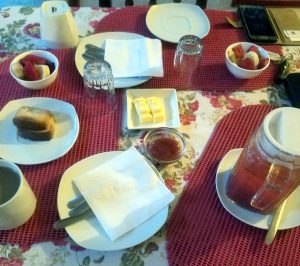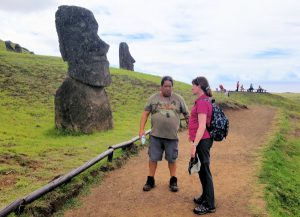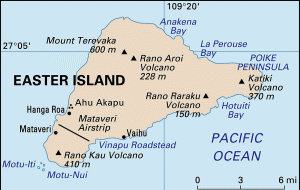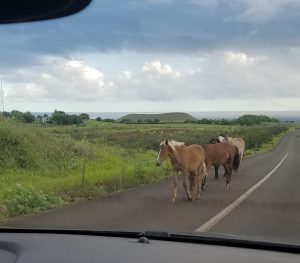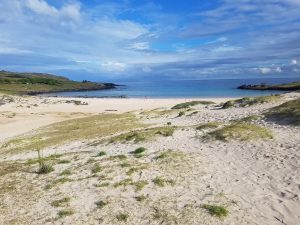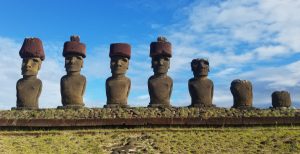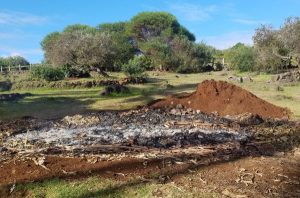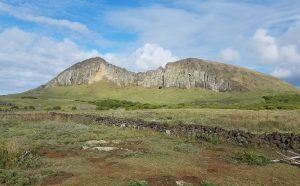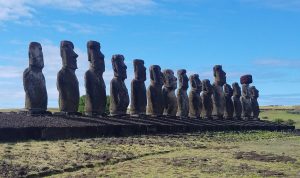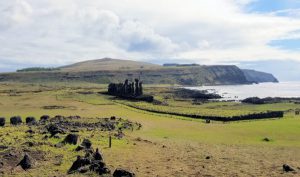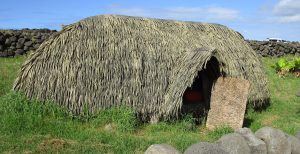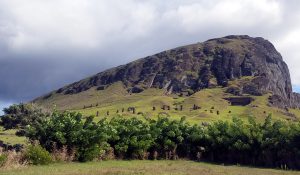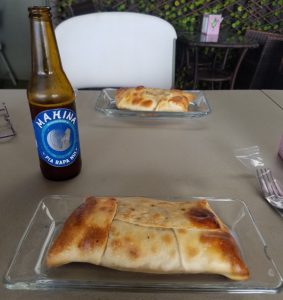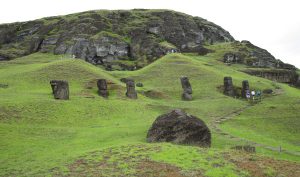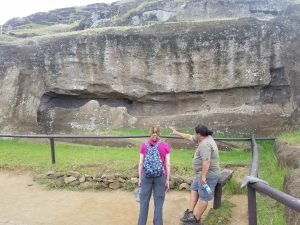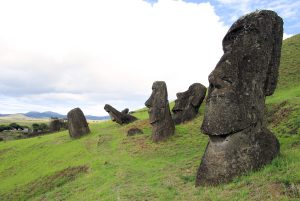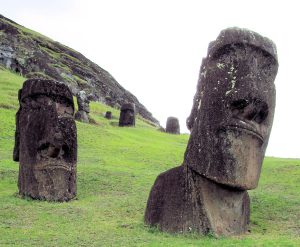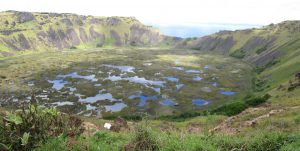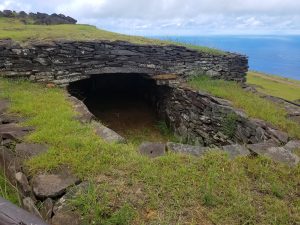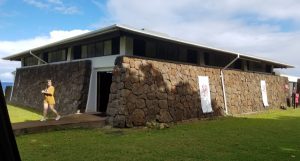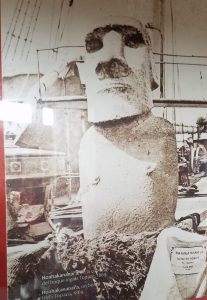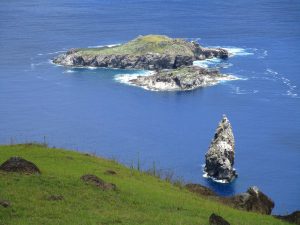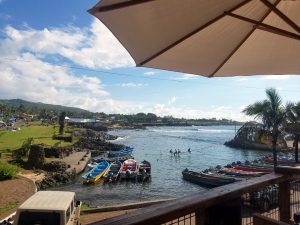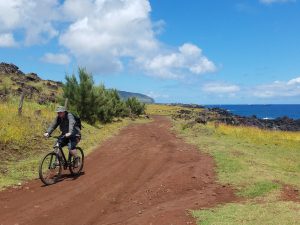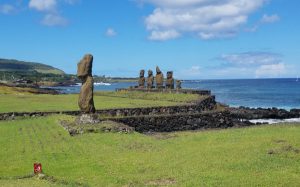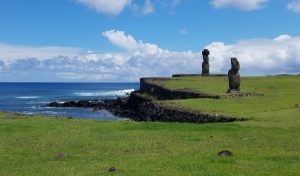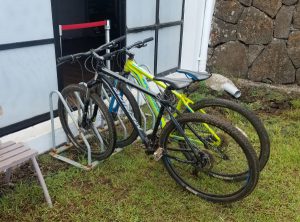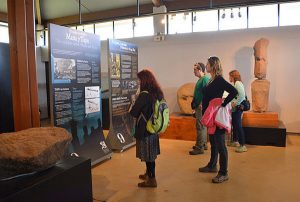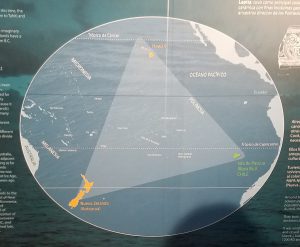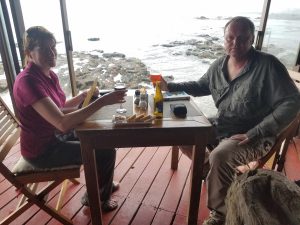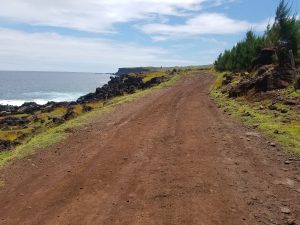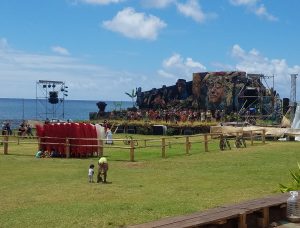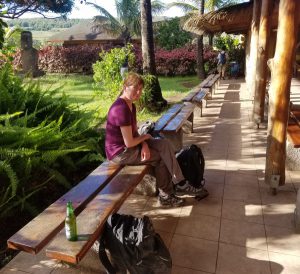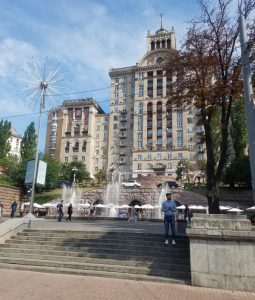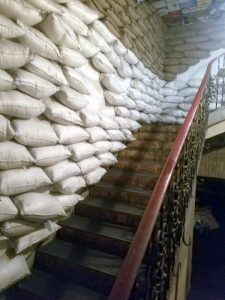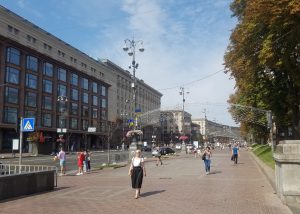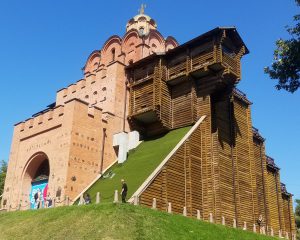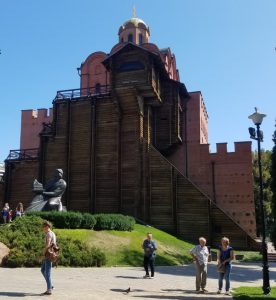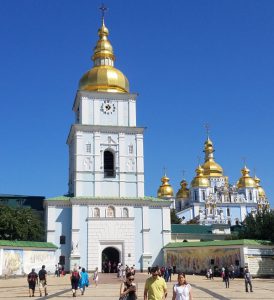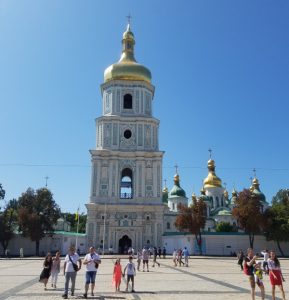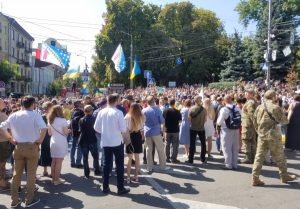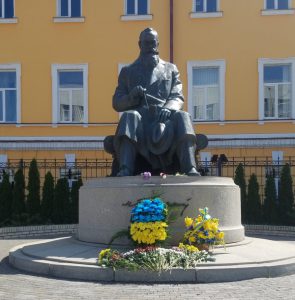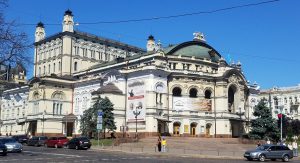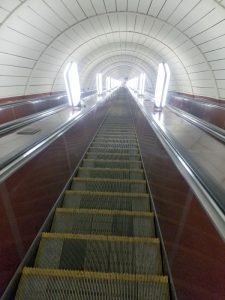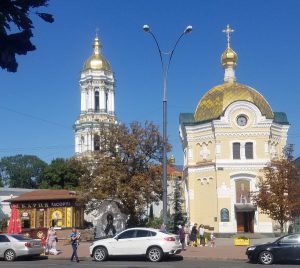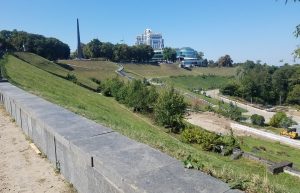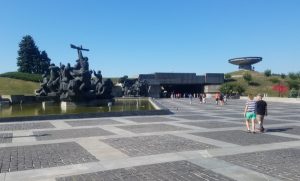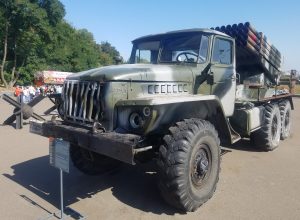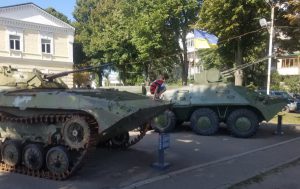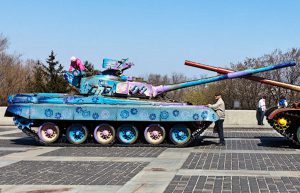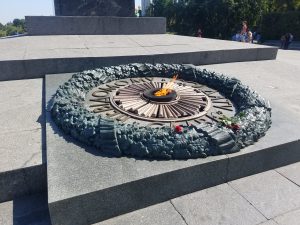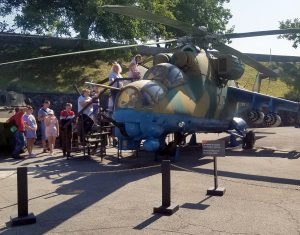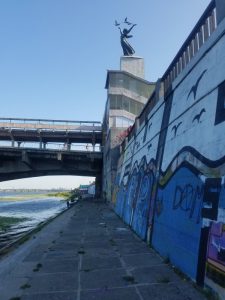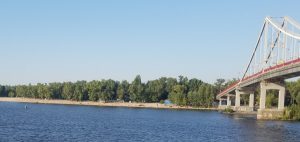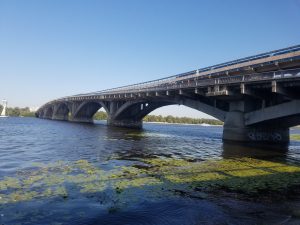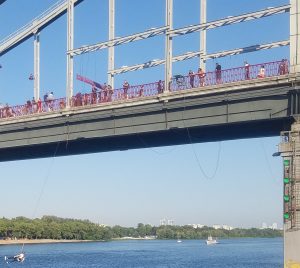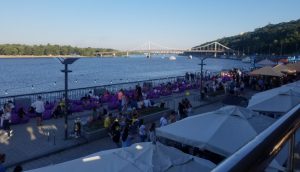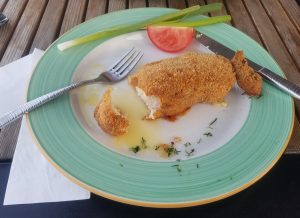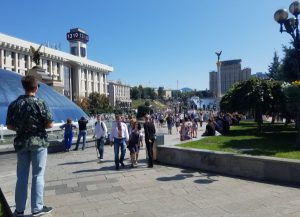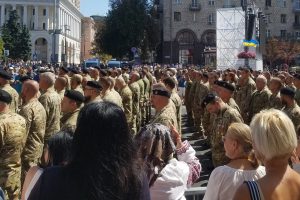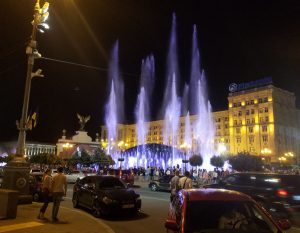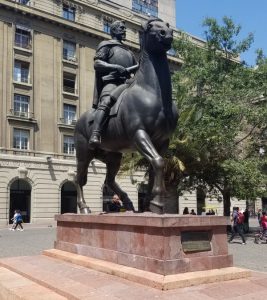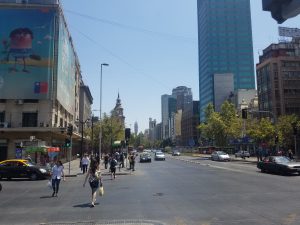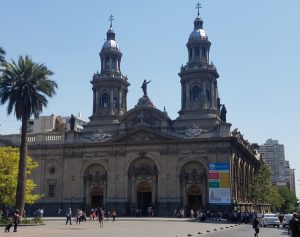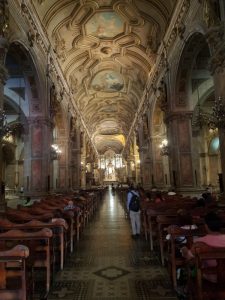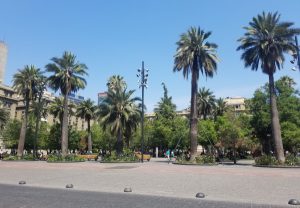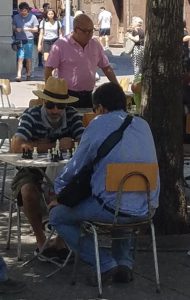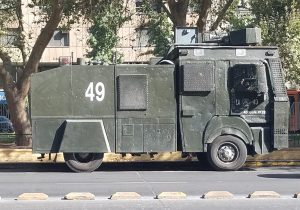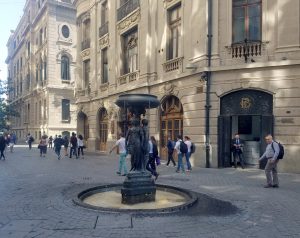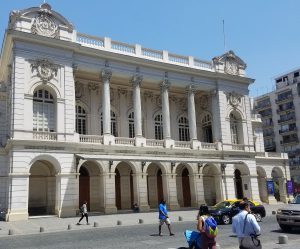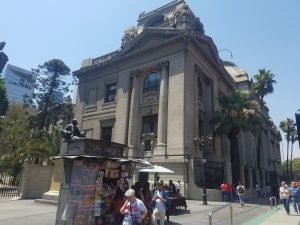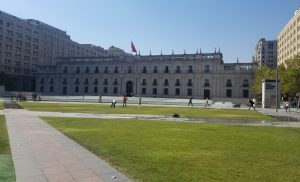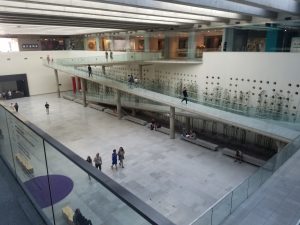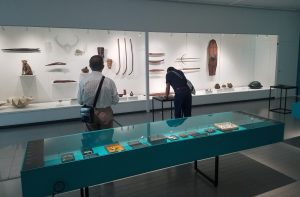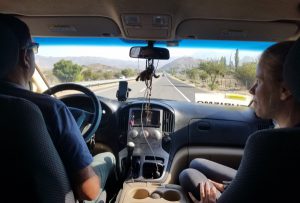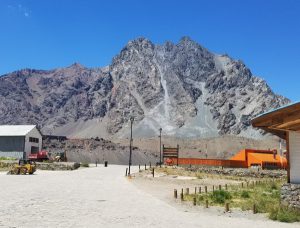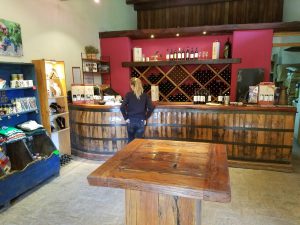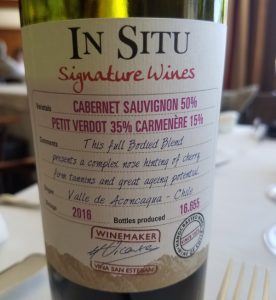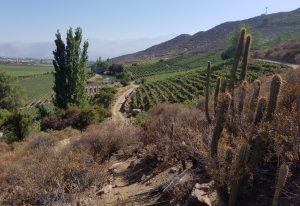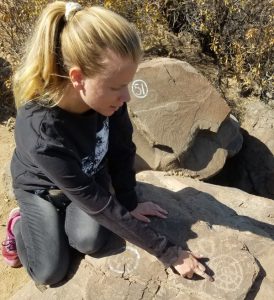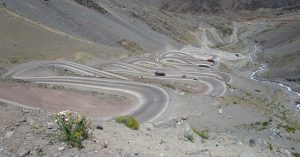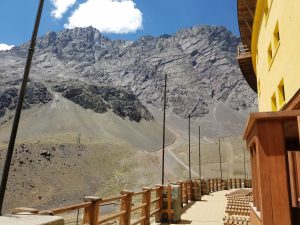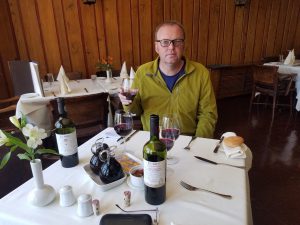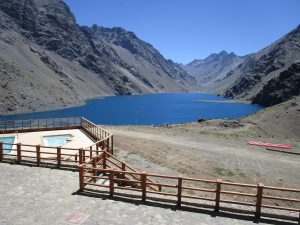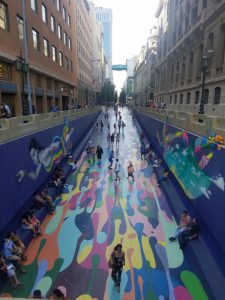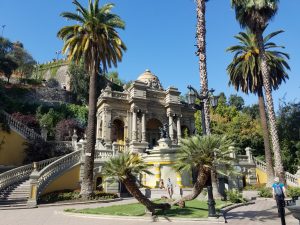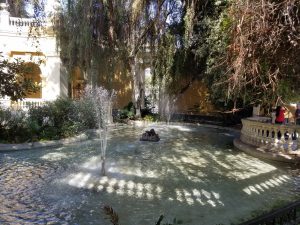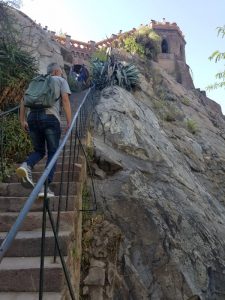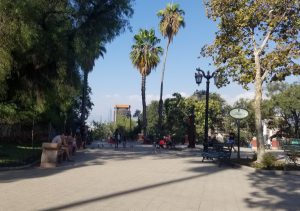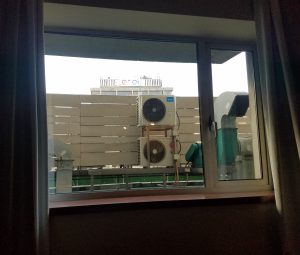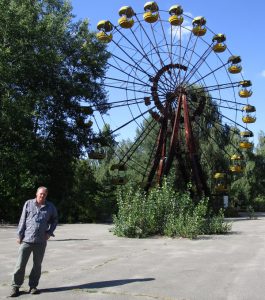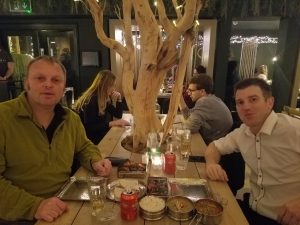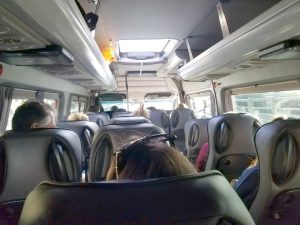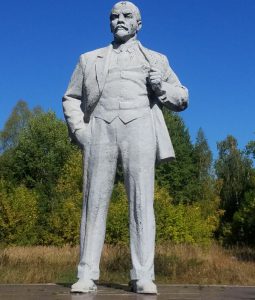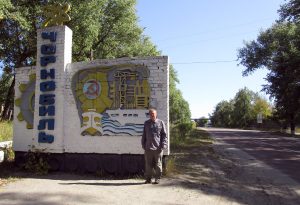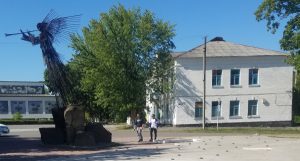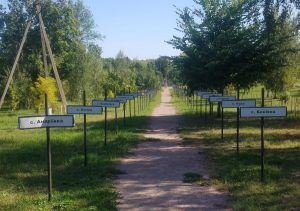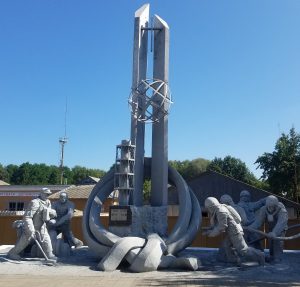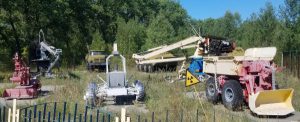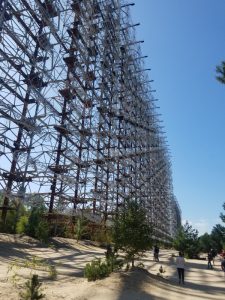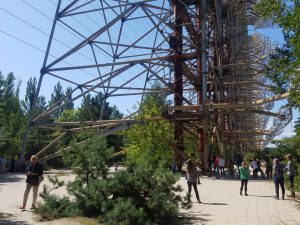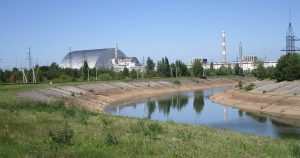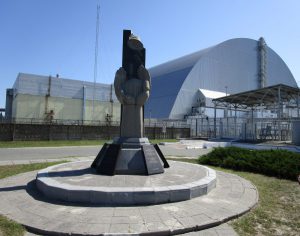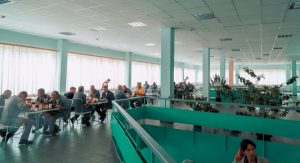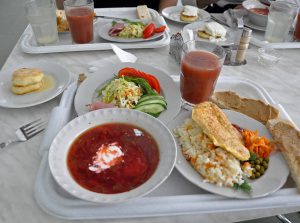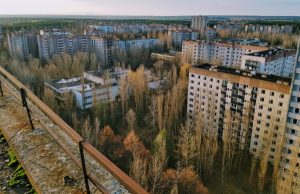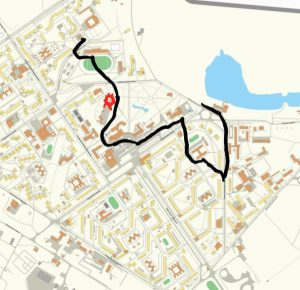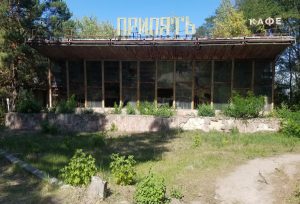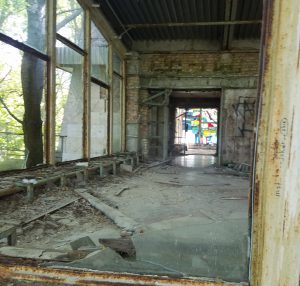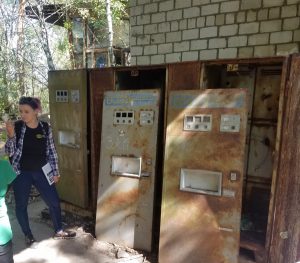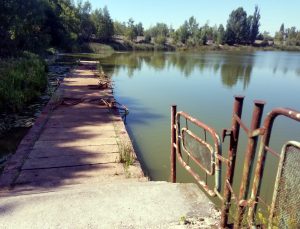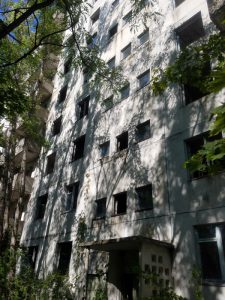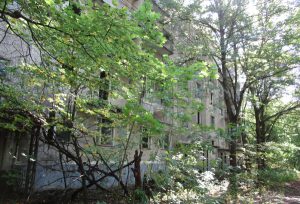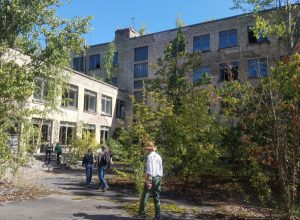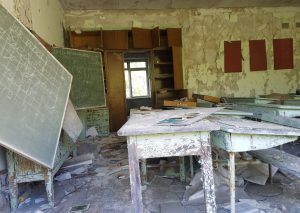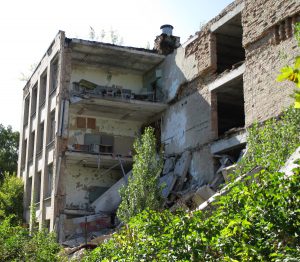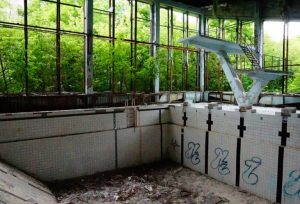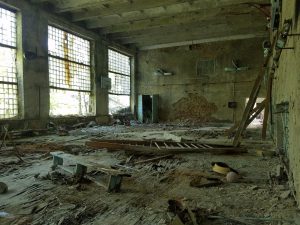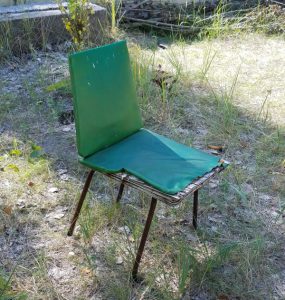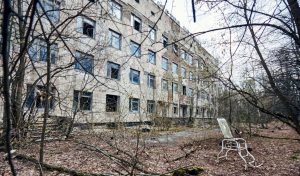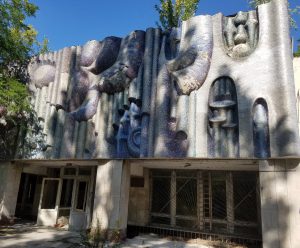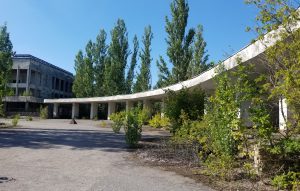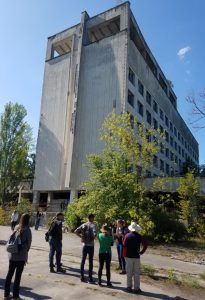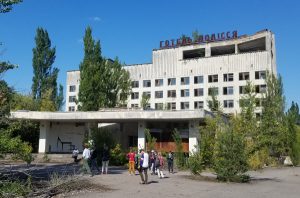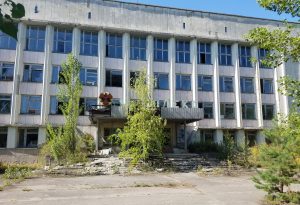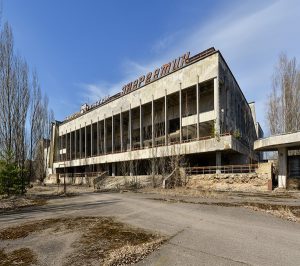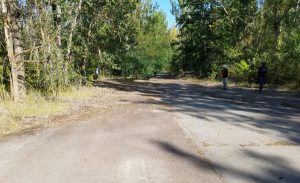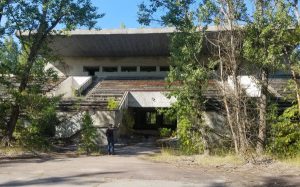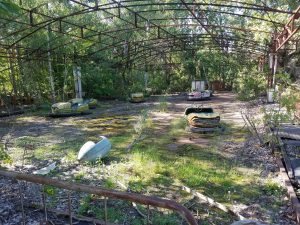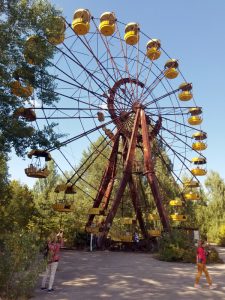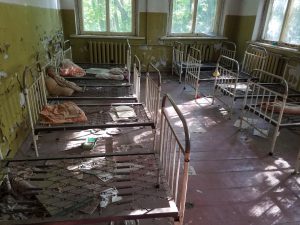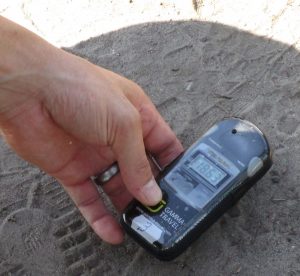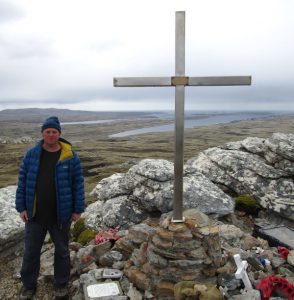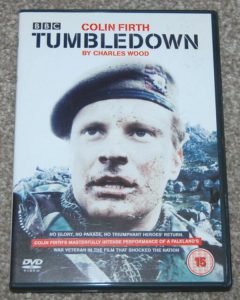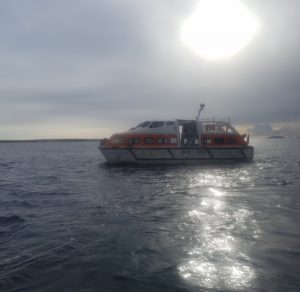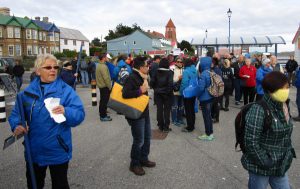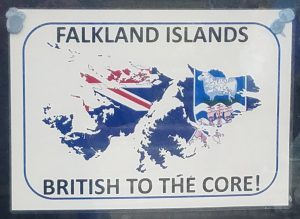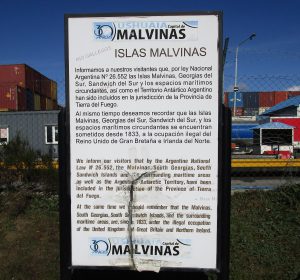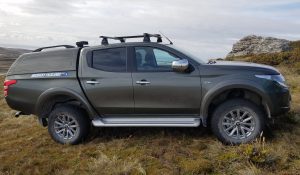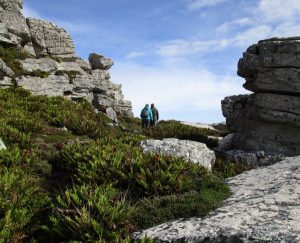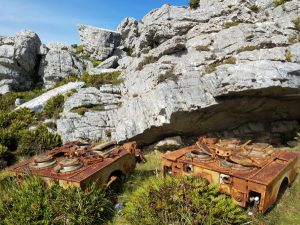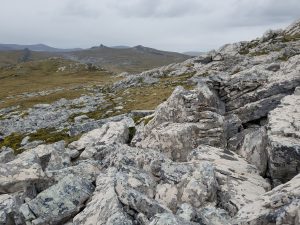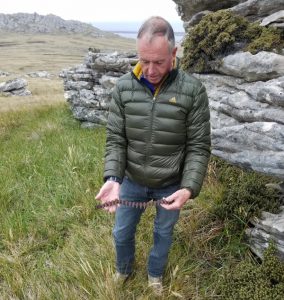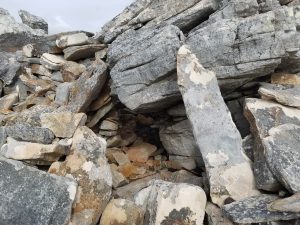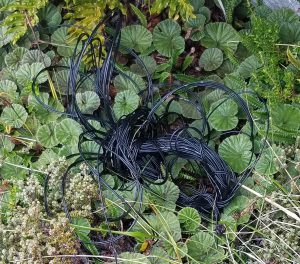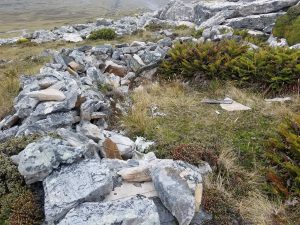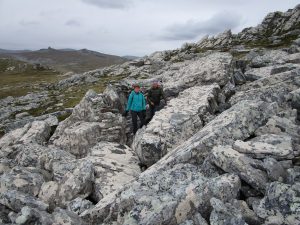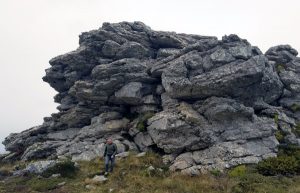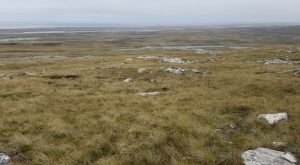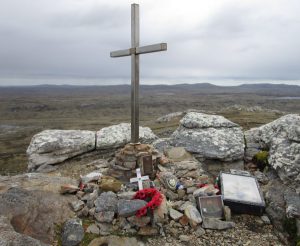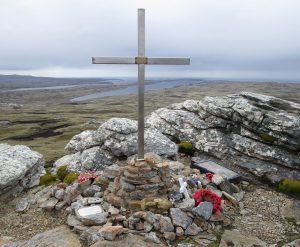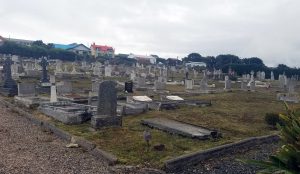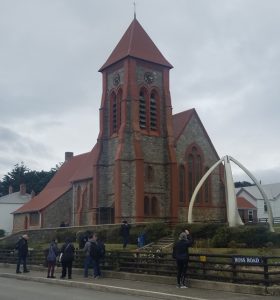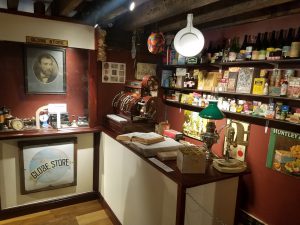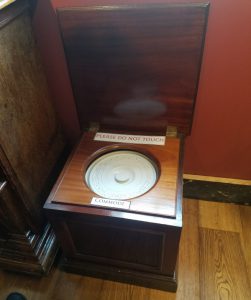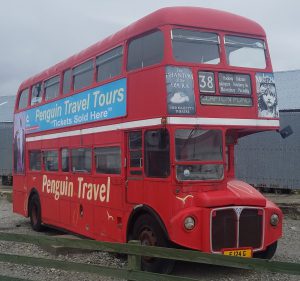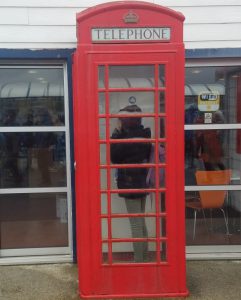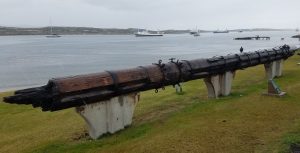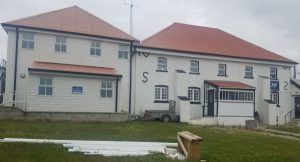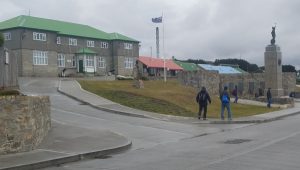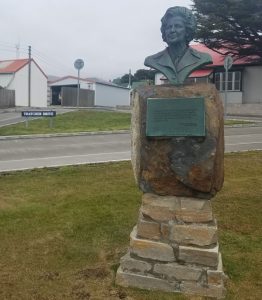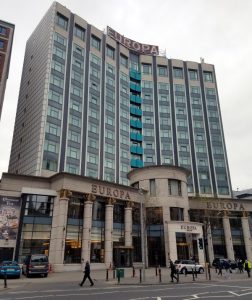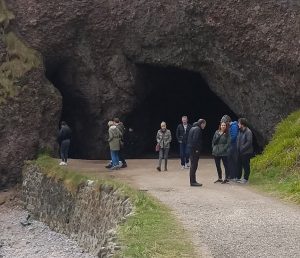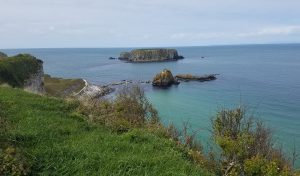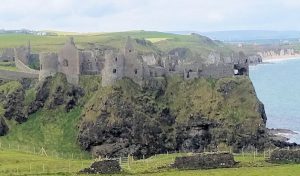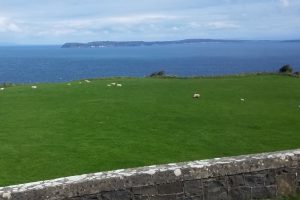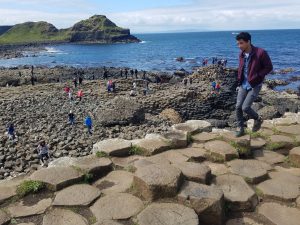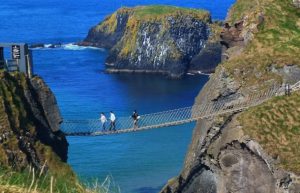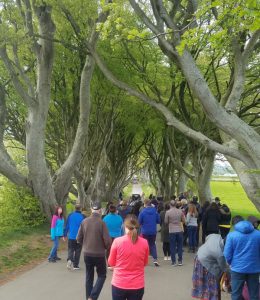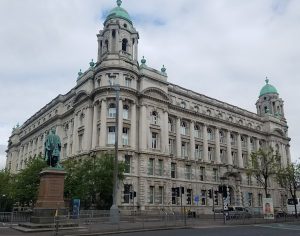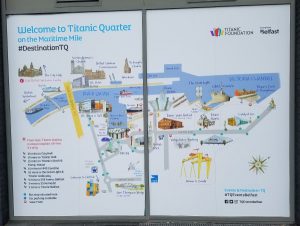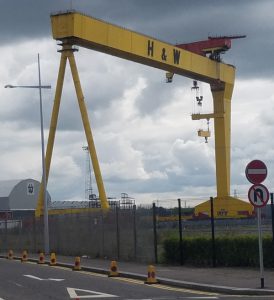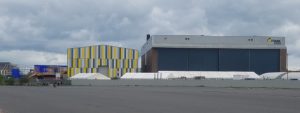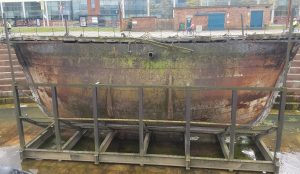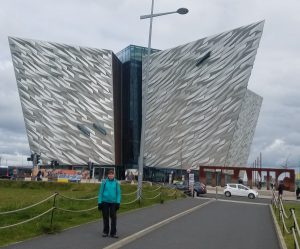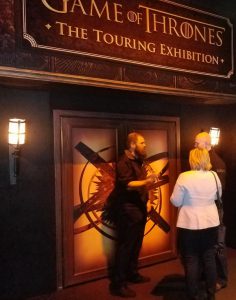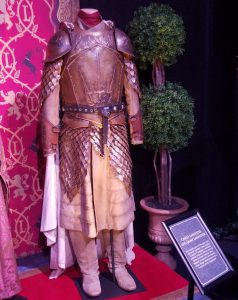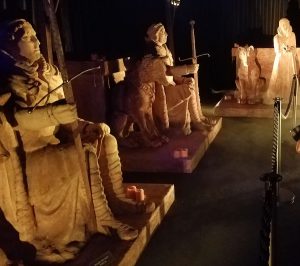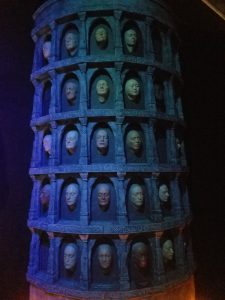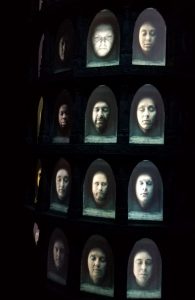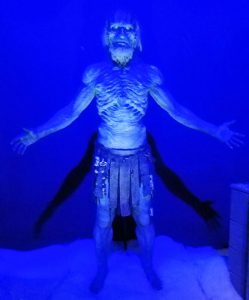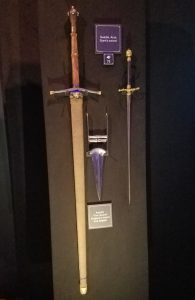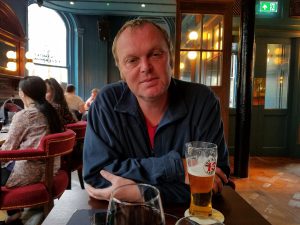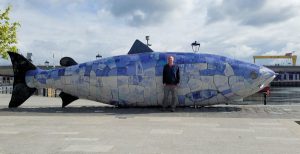
Although its nearby, I’d never been to Northern Ireland.
This is a picture of me in front of the Salmon of knowledge.
It is made up of pictures and symbols from Northern Ireland, contains a time capsule, and symbolises the cleaning of the river Lagan.
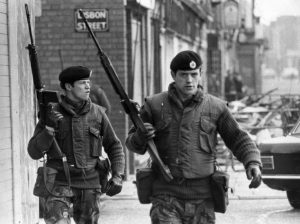
Although Northern Ireland is transformed from the days before the Good Friday agreement, I couldn’t help being nervous.
After all, my youth was filled with TV images of the troubles.
But if you only did things that made you feel comfortable, you’d never do anything.
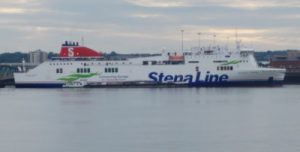
We’d decided to travel by ferry, and the best part, the port it leaves from is near the Liver Building where I work.
So, I finished work on Friday evening, picked up my bag and set off.
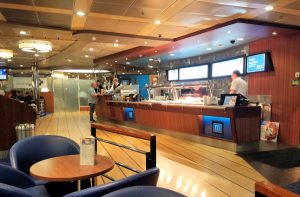
I wasn’t sure what to expect on the ferry. Was it going to be filled with stag do’s and the like.
Nothing of the sort, they had a really nice bar/cafeteria, free Wi-Fi throughout and a small cinema for Children.
The surprise was when it was time to retire for the evening, we headed to our room, but lots of people produced sleeping bags and proceeded to “bed down” on the lounge floor.
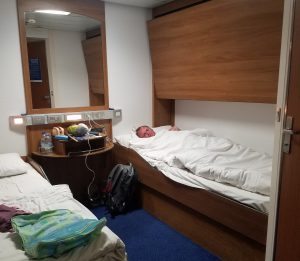
Our on-suit room was very comfortable. It was actually a 4 birth, but we pushed the 2 additional beds up.
The shower was piping hot, loads of room for our bags and lots of charging ports for our phones and tablets.
Now the bad news, it docks in Belfast at 6am, so no lie in bed.
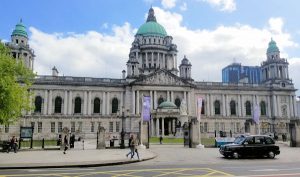
I had done some research but for some reason I thought we’d arrive in the city centre. Not so, it took 90 minutes to walk into town, but the walk helped us to wake up.
We wander around the town, which was pretty quiet at that time of the morning. This is City Hall, a very famous building in Belfast.
Straight away, I start hearing people speaking Ulster/Scotts, the local dialect.
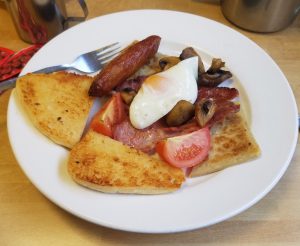
Speaking of Ulster, I was really hungry.
My guidebook said you mustn’t leave Belfast without trying an Ulster Fry.
It was quite delicious. One thing I notice when I travel is how people react to tipping. We put £2 into the tips jar in the cafe we visited and they looked delighted.
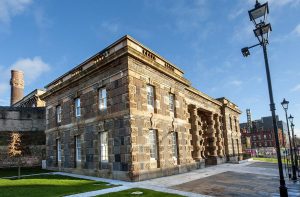
Our first activity is a visit to Crumlin road Gaol.
The trip involves a tour of the prison, some lunch and a tour around the peace wall, one half given by a loyalist former prisoner and the 2nd half given by a republican former prisoner.
But first, were shown a short documentary outlining the history of Ireland, the troubles , the Good Friday agreement and the constitution.

We were told we could take as many pictures as we wanted but no video and no voice recording.
We were introduced to our first tour guide. Asked if he had been a UVA supported, he explained that he had actually been a combatant and regularly went out in the evenings armed, usually to provide security.
He said that we should ask him any question, he was keen to tell the story. I found him very open minded and well educated.
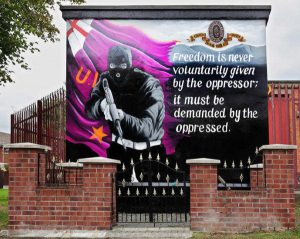
She showed us the upper and lower Shankhill road where the UVA, the UVF and the Red Hand Commando were roughly based.
There were murals everywhere and lots of tours run by Black Taxi.

One surprisingly ironic moment was while waking near the peace wall, he told us to slow down, because it was “dangerous”.
It turned out the road had a blind bend and he was concerned about road accidents.
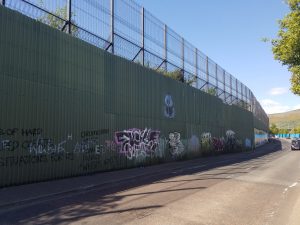
The peace wall, is there to protect the communities (so in reality its not really about peace) we’d been given pens to write message on the wall.
I was amazed to see how close the houses from the different communities were to each other.
Our guide explained that in his youth, some older family members had convinced him to join the UVA. At that age he said, many young men are more easily influenced. I thought of my own youth and I had to agree.
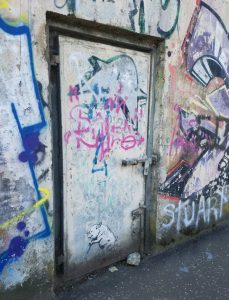
There is a door in the wall we visited. He said the last person to walk through this door was the Dalhi Lama (he wont be doing it again soon, on close inspection, it’s now welded shut).
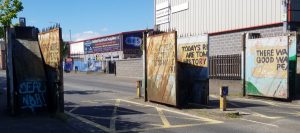
The Gates are closed remotely every night just before dark.
I asked him what would it have been like if he’d been on the “wrong” side of the wall after dark. He said simply, that never would have happened.
They would have recognised me simply because they didn’t recognise me and then bad things would have happened…
We were introduced to our republican guide. I was surprised when both guides shook hands.
When I asked, the UVA chap said: We are both former combatants, we’ve been shot at and injured. We’ve both lost family, so we know what’s at stake!.
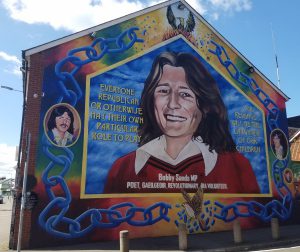
It has to be said that the 2nd guide, was not as open minded but he did tell his story eloquently and there was a genuine manner about him that I warmed to.
He wasn’t a catholic and had been out on a peaceful human rights march when the “army” had broken his jaw with a rifle. “That’s when I joined the IRA” he said.
He explained that Catholics had been persecuted by the police and the army, and struggled to find work and proper housing due to prejudice.
He said he felt that many of the problems had been resolved, but the IRA had disarmed and disbanded and the Red Hand Commando were still active.
We saw this Mural to Bobby Sands who we’d hear more about later in the Crumlin Prison tour.
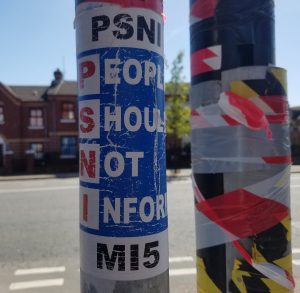
Interesting sticker.
There are still strong feeling about the local people and the police.
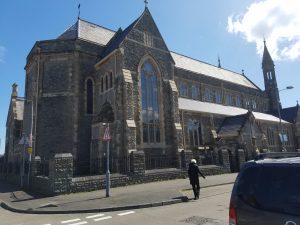
We walk past the Clonard Monastry where the original peace talks were held before the Good Friday agreement.
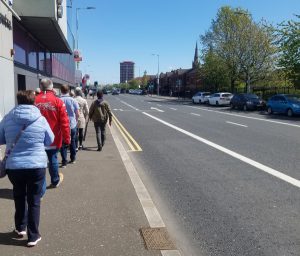
I’ve stood on the Great Wall of China, and I’ve watched the sun set over the Pyramids at Giza, but I honestly never thought I would stand on the Falls road.
I had read of so many terrible things happening on the Falls road. Over 3600 people died in the troubles, a quarter of them in a small area around where I’m standing.
Yet, it felt like any other street, people were walking to the pub and carrying shopping home.

With the outdoor part of the tour complete, we head back to Crumlin road gaol and the Cuffs restaurant there.
Lunch was no suprise. Irish stew, and actually really good. We got a free drink, but I declined Guinness and instead had lager.
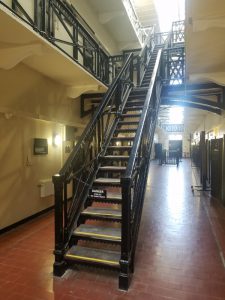
We met our tour guide, a charming lady who walked us all around the prison and exercise yard telling us stories of things that had happened.
We even got to see the Governors office. She said that Bobby Sands was married there, with only a few sandwiches and a prison guards for witnesses.
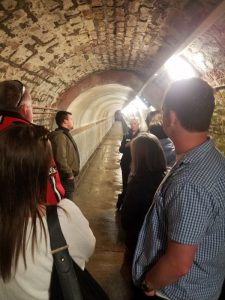
Across the road, rather run down, was the courthouse. So many people were arrested at the time, that an underground tunnel underneath the road, connected the 2 buildings.
Our tour finishes and our excellent guide asks if we’d like to sign the visitors book. She had been slightly nervous throughout, and it was only then that we found out.
For 14 years she’d been one of a handful female guards to work at the Prison. She had retired and a few years later (a week earlier) had taken a job there as a tour guide.
Perhaps some skills are transferable.
